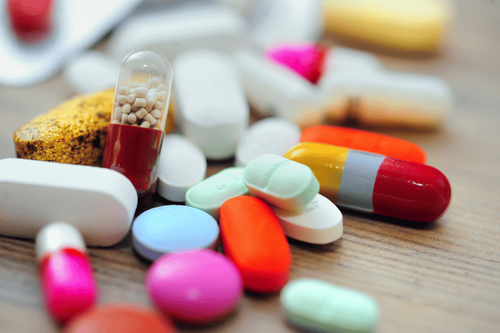This is an automatically translated article.
Diabetes (diabetes) is tending to be more common with many unpredictable developments, even among young people. However, to recognize the early symptoms of diabetes is still unclear, so many people do not know they have the disease.
1. What is early stage diabetes?
Diabetes occurs when blood sugar (blood glucose) is too high. This can be because the body does not use insulin properly, causing abnormally high blood sugar (type 2 diabetes) or when there is damage to the insulin-producing beta cells of the pancreas. deficiency or inability to make insulin (type 1 diabetes), which disrupts the metabolism of sugars, proteins, fats, and minerals.
When a patient has diabetes, metabolism will be disturbed, carbohydrates from food, when put into the body, will not be converted to create energy, this situation will lead to sugar levels in the long run. accumulate in the blood gradually. When blood sugar is high, it can cause cardiovascular diseases, damage to many other organs in the body such as kidneys, eyes, nerves and other serious diseases.
Type 1 diabetes is usually diagnosed in childhood. In contrast, type 2 diabetes can develop at any age, but it is more common in the elderly.
Prediabetes occurs when your blood sugar is determined to be higher than normal but not high enough to become type 2 diabetes. Therefore, there are changes that can be made to reduce the likelihood disease progression to type 2 diabetes.
2. What are the symptoms of early-stage diabetes?
Early-stage diabetes symptoms can include:
Frequent urination: When blood sugar is high, your kidneys excrete excess blood sugar, causing you to urinate more often. Therefore, one of the early diabetes symptoms is frequent urination (about 4-7 times in 24 hours). Constant cravings for water: While the kidneys work overtime and you urinate more often, valuable fluids are drawn out of the tissues. Frequent urination will cause the body to lose water, so you feel thirsty and have to constantly rehydrate. The average person needs about 2 liters of water a day, but people with diabetes can drink more than 4 liters / day. Fatigue: When blood sugar is high, your body has to work hard to get rid of the excess sugar. Not only does this process affect your body, but it also changes the way your body uses glucose for energy. Excessively high blood sugar has the effect of causing fatigue among other symptoms. Blurry vision: High blood sugar can damage the eye's small blood vessels, leading to a swollen lens. As blood sugar rises and falls, your vision may return to normal or worsen, respectively. If detected early and treated to stabilize blood sugar levels, this condition can be cured. Increased hunger: This is one of the early signs of diabetes. When blood levels are high, your body is actively trying to get rid of it. Because your body excretes too much of the glucose you get from food, hunger may increase. Unexplained weight loss: With excess glucose, you are losing the biggest source of energy and when the body cannot use glucose for energy, it will start burning fat and breaking down protein. in muscle, causing rapid weight loss. Cuts and wounds heal slowly: Damaged blood vessels cause impaired blood circulation. As a result, it will be harder for blood to reach the affected area and small cuts or wounds will be difficult to heal, which can take weeks or months to heal. This slow healing process makes unhealed cuts and wounds susceptible to infection, increasing the risk of amputation. Tingling or numbness in the hands or feet: High blood sugar can significantly affect the nerves. This damage begins with pain or numbness and can worsen into pain or neuropathy over time. Skin discoloration: Insulin resistance can cause the skin to develop atopic dermatitis (acanthosis nigricans), which often appears in the wrinkles of the neck, armpits, or groin. This darkened area can be raised and has a velvety smooth texture. Yeast infections: Blood sugar and excess sugar in the urine create an ideal environment for yeast to grow. Yeast can feed on excess sugar in the genital areas, as well as the mouth or armpits. Maintaining blood sugar levels helps reduce the risk of yeast infections.
3. Risk factors for people with early-stage diabetes
If you find you have risk factors for developing diabetes, it is important to be extra vigilant in preventing the onset of the disease. Here are some common risk factors:
45 years and older; Overweight or obese; Sedentary lifestyle; Have a family member who has had diabetes; The patient has ever had gestational diabetes; Patients with a history of high blood pressure, heart disease or stroke; Are African-American, Alaska Native, American Indian, Asian-American, Hispanic/Latino, Native Hawaiian, or Pacific Islander. In conclusion, early detection of diabetes is very important for prompt treatment, increase the cure rate, reduce complications, prolong life and increase the patient's quality of life.
Please dial HOTLINE for more information or register for an appointment HERE. Download MyVinmec app to make appointments faster and to manage your bookings easily.













